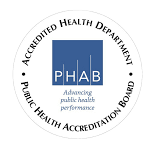Rabies FAQs
Human Rabies
Q: What is Rabies?
Answer: Rabies is an infectious viral disease that invades the central nervous system of humans and other furbearing, warm-blooded animals. A wide variety of mammals can contract the disease, but it occurs most often in skunks, bats, cats, dogs, foxes, coyotes, raccoons, and livestock.
Q: How is Rabies transmitted?
People usually get rabies from the bite of a rabid animal. It is also possible, but quite rare, that people may get rabies if infectious material from a rabid animal, such as saliva, gets directly into their eyes, nose, mouth, or a wound. Worldwide, more than 55,000 humans die of rabies each year, primarily in developing countries in Asia, Africa and Latin America. Ninety-nine percent (99%) of such cases result from bites inflicted by rabid dogs. In the United States, transmission from dogs is becoming a rarity due to successful dog vaccination programs. Careless handling is the primary cause of rabies transmission from bats. Rabies virus has not been isolated from bat blood, urine or feces, and there is no evidence of air-borne transmission in buildings. No transmission from bats to dogs is known to have occurred, although rare cases of transmission to cats have been documented. Transmission from person to person is theoretically possible since the saliva of an infected person may contain virus, but this has never been documented.
Q: Can I get rabies in any way other than an animal bite?
Answer: Non-bite exposures to rabies are very rare. Scratches, abrasions, open wounds, or mucous membranes contaminated with saliva or other potentially infectious material (such as brain tissue) from a rabid animal constitute non-bite exposures.
Inhalation of aerosolized rabies virus is also a potential non-bite route of exposure, but other than laboratory workers, most people are unlikely to encounter an aerosol of rabies virus.
Other contact, such as petting a rabid animal or contact with the blood, urine or feces (e.g., guano) or spray (e.g. skunk spray) of a rabid animal does not constitute an exposure and is not an indication for prophylaxis.
Q: How soon after an exposure should I seek medical attention?
Answer: Medical assistance should be obtained as soon as possible after an exposure. There have been no vaccine failures in the United States (i.e., someone developed rabies) when postexposure prophylaxis (PEP) was given promptly and appropriately after an exposure.
Q: What medical attention do I need if I am exposed to rabies?
Answer: One of the most effective methods to decrease the chances for infection involves thorough washing of the wound with soap and water. Specific medical attention for someone exposed to rabies is called postexposure prophylaxis or PEP. In the United States, postexposure prophylaxis consists of a regimen of one dose of immune globulin and four doses of rabies vaccine over a 14-day period. Rabies immune globulin and the first dose of rabies vaccine should be given by your health care provider as soon as possible after exposure. Additional doses or rabies vaccine should be given on days 3, 7 and 14 after the first vaccination. Current vaccines are relatively painless and are given in your arm, like a flu or tetanus vaccine.
Q: How do I obtain Rabies vaccination?
Answer: (Post Exposure Immunization)
See your family doctor or go to a hospital emergency room. Have the physician consult with the Arkansas Department of Health (501-661-2000) on the necessity for treatment. If you have been exposed to a rabid or suspect rabid animal post-exposure treatment is effective with the following products. The physician can obtain the vaccines from their pharmaceutical suppliers. The Health Department does not maintain a supply of vaccine but is always available for consultation on the risk of rabies from any exposure.
Post-exposure Rabies treatment includes four (4) doses of Human Diploid Cell Vaccine in addition to administration of Human Rabies Immune Globulin (HRIG) at the rate of 2 ml for every 33 lbs. of body weight. HRIG, as much as is anatomically feasible, should be infiltrated into and around the wound. Any remaining product should be administered intramuscularly in the deltoid or quadriceps (at a location other than that used for vaccine inoculation to minimize potential interference). Administer the total dose of immune globulin on day 0. One dose of HDCV is administered on each of Days 0, 3, 7 and 14.
(Individuals who are uninsured and need financial assistance with rabies vaccine may contact Sanofi Pasteur at (866) 801-5655 or Rx Hope at 800-244-7668.)
Q: Will the rabies vaccine make me sick?
Answer: Adverse reactions to rabies vaccine and immune globulin are not common. Newer vaccines in use today cause fewer adverse reactions than previously available vaccines. Mild, local reactions to the rabies vaccine, such as pain, redness, swelling, or itching at the injection site, have been reported. Rarely, symptoms such as headache, nausea, abdominal pain, muscle aches, and dizziness have been reported. Local pain and low-grade fever may follow injection of rabies immune globulin.
Q: What if I cannot get rabies vaccine on the day I am supposed to get my next dose?
Answer: Consult with your doctor or state public health officials for recommended times if there is going to be a change in the recommended schedule of shots. Rabies prevention is a serious matter and changes should not be made in the schedule of doses.
Q: Can rabies be transmitted from one person to another?
Answer: The only well-documented documented cases of rabies caused by human-to-human transmission occurred among 8 recipients of transplanted corneas, and recently among three recipients of solid organs (see MMWR article). Guidelines for acceptance of suitable cornea and organ donations, as well as the rarity of human rabies in the United States, reduce this risk. In addition to transmission from cornea and organ transplants, bite and non-bite exposures inflicted by infected humans could theoretically transmit rabies, but no such cases have been documented. Casual contact, such as touching a person with rabies or contact with non-infectious fluid or tissue (urine, blood, feces) does not constitute an exposure and does not require postexposure prophylaxis. In addition, contact with someone who is receiving rabies vaccination does not constitute rabies exposure and does not require postexposure prophylaxis.
Q: What are the symptoms of Rabies?
Answer: Rabies causes fatal inflammation of the brain and spinal cord. Symptoms usually develop in three to eight weeks after exposure. Early symptoms in humans include pain, burning, and numbness at the site of infection. Victims complain of headaches, inability to sleep, irritability, muscle spasms of the throat and difficulty swallowing. Loss of ability to control one’s movements occurs, followed by delirium, coma, and death in about one to three weeks.
Q: Is there a cure for Rabies?
Answer: No, once symptoms appear, death follows in a few days.
For More Information


